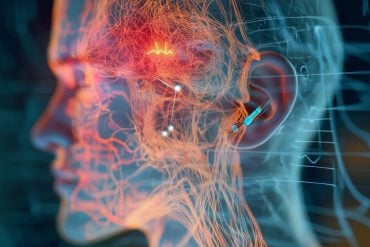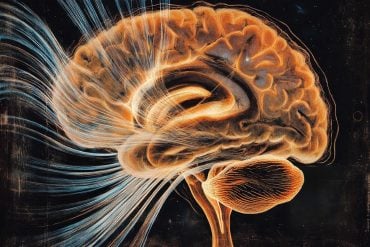Summary: Early exposure to adverse childhood experiences (ACEs), including parental drug misuse and mental health challenges, increases the risk of problematic cannabis use during adolescence.
The study analyzed over 5,000 participants from the ‘Children of the 90s’ study. Individuals who experienced four or more ACEs were found to be over twice as likely to regularly use cannabis in their teenage years.
Given the potential long-term mental and physical health effects, the researchers are calling for more supportive interventions for youth exposed to such adversities.
Key Facts:
- The study found that young people exposed to four or more adverse childhood experiences (ACEs) are over twice as likely to regularly use cannabis during their teenage years.
- Adolescents most at risk for regular cannabis use were those who had parents with a history of substance misuse or mental health problems.
- The research underscores the need for increased support and interventions to help young people before cannabis use becomes a habit, especially among those exposed to multiple ACEs.
Source: University of Bath
Young people who are exposed to adverse childhood experiences between the ages of 0 – 12 years, including parental drug misuse, are at highest risk for developing problematic adolescent cannabis use as teenagers, according to a new study.
The research, led by University of Bath psychologist, and expert in adolescent mental health, Dr Lindsey Hines, analysed outcomes for over 5,000 participants tracked using the Avon Longitudinal Study of Parents and Children – also known as the ‘Children of the 90s’ study.

Adverse childhood experiences (‘ACEs’) considered included physical, emotional and sexual abuse, emotional neglect, bullying, parental substance use, violence between parents, parental mental health challenges, and a parent being convicted of a criminal offence.
Through the study they combined these negative experiences in childhood with self-reported data about the frequency of cannabis use at various points between ages 13 – 24. Self-reported data ranged from individuals having never experimented with cannabis to using it regularly in their teenage years.
They found that people who had experienced four or more ACEs were more than twice as likely to use cannabis regularly as teenagers, compared to those who experienced low levels of ACEs. Teens who had grown up with parents who had abused drugs or alcohol, or had parents with mental health problems, were at the most risk of going on to regularly use cannabis.
Given the long-term mental and physical health implications of cannabis use at young ages, they are calling for much greater support to be put in place to help young people before cannabis use becomes engrained. Parts of the UK could learn from approaches like the cannabis support for young people offered by Bristol Drug Project (BDP), they say.
Dr Lindsey Hines explained: “Our study is one of the first to comprehensively track adverse childhood experiences from birth, and to see how they relate to teenage cannabis use which can begin as early as 13.
“Through this, we observe a strong correlation between these difficult early life experiences and regular cannabis use in teenage years and young adulthood.
“A growing body of research is highlighting the challenges regular cannabis poses, in particular for young people’s long-term mental health.
“With this study we wanted to focus on those factors underlying cannabis use, with the hope of informing more targeted interventions which in the future can help young people and their families.”
The BDP is a charity providing harm reduction and treatment services for people who are experiencing a negative relationship with drugs and/or alcohol. With 36 years of experience, its goal is to support people towards the changes they want to see in their lives, no matter what they may be.
Hazel McMahon is one of BDP’s New Leaf Cannabis Support Workers in its Youth team. She said: “Our youth team supports both young people who are using substances and those who are affected by someone else’s substance use.
“Through working with these two groups concurrently we see the significant overlap in these populations daily. ACEs and other trauma are significant factors in steering the provision of our services.
“Our cannabis support group, New Leaf, utilizes a trauma-informed approach, and we build on protective factors known to reduce the negative impact of ACEs, such as having a positive and consistent relationship with an adult.
“We warmly welcome this research that evidences the link between ACEs and cannabis use, and we hope that it will influence the provision of specific cannabis support services for young people around the country.”
In recent years public sector organisations in Bristol and Gloucester have spearheaded plans to increase awareness of ACEs in the public sector, with a goal of reducing early exposure to adversity. Dr Hines’ work suggests that doing so could significantly reduce patterns of harmful cannabis use in the next generation.
About this neurodevelopment and CUD research news
Author: Chris Melvin
Source: University of Bath
Contact: Chris Melvin – University of Bath
Image: The image is credited to Neuroscience News
Original Research: Open access.
“Adverse childhood experiences and adolescent cannabis use trajectories: findings from a longitudinal UK birth cohort” by Lindsey Hines et al. Lancet Public Health
Abstract
Adverse childhood experiences and adolescent cannabis use trajectories: findings from a longitudinal UK birth cohort
Background
Adverse childhood experiences (ACEs) are classically defined as physical abuse, sexual abuse, emotional abuse, emotional neglect, bullying, parental substance use or abuse, violence between parents, parental mental health problems or suicide, parental separation, or a parent convicted of criminal offence. Exposure to ACEs can be associated with cannabis use, but no comparisons across all adversities have been made while also considering timing and frequency of cannabis use. We aimed to explore the association between ACEs and cannabis use timing and frequency in adolescence, considering the cumulative number of ACEs and individual ACEs.
Methods
We used data from the Avon Longitudinal Study of Parents and Children, a longitudinal UK birth cohort study. Longitudinal latent classes of cannabis use frequency were derived from self-reported data at multiple timepoints in participants aged 13–24 years. ACEs between ages 0 years and 12 years were derived from prospective and retrospective reports at multiple timepoints by parents and the participant. Multinomial regression was used to analyse the effect of both cumulative exposure to all ACEs and the ten individual ACEs on cannabis use outcomes.
Findings
5212 participants (3132 [60·0%] were female and 2080 [40·0%] were male; 5044 [96·0%] were White and 168 [4·0%] were Black, Asian, or minority ethnic) were included in this study. After adjustment for polygenic risk and environmental risk factors, participants who had 4 or more ACEs at age 0–12 years were at increased risk of early persisting regular cannabis use (relative risk ratio [RRR] 3·15 [95% CI 1·81–5·50]), later onset regular use (1·99 [1·14–3·74]), and early persisting occasional use (2·55 [1·74–3·73]) compared with low or no cannabis use. After adjustment, early persisting regular use was associated with parental substance use or abuse (RRR 3·90 [95% CI 2·10–7·24]), parental mental health problems (2·02 [1·26–3·24]), physical abuse (2·27 [1·31–3·98]), emotional abuse (2·44 [1·49–3·99]), and parental separation (1·88 [1·08–3·27]) compared with low or no cannabis use.
Interpretation
Risks for problematic adolescent cannabis use are highest for individuals reporting 4 or more ACEs, and were particularly raised for those with parental substance use or abuse. Public health measures to address ACEs might reduce adolescent cannabis use.
Funding
The Wellcome Trust, UK Medical Research Council, Alcohol Research UK.






